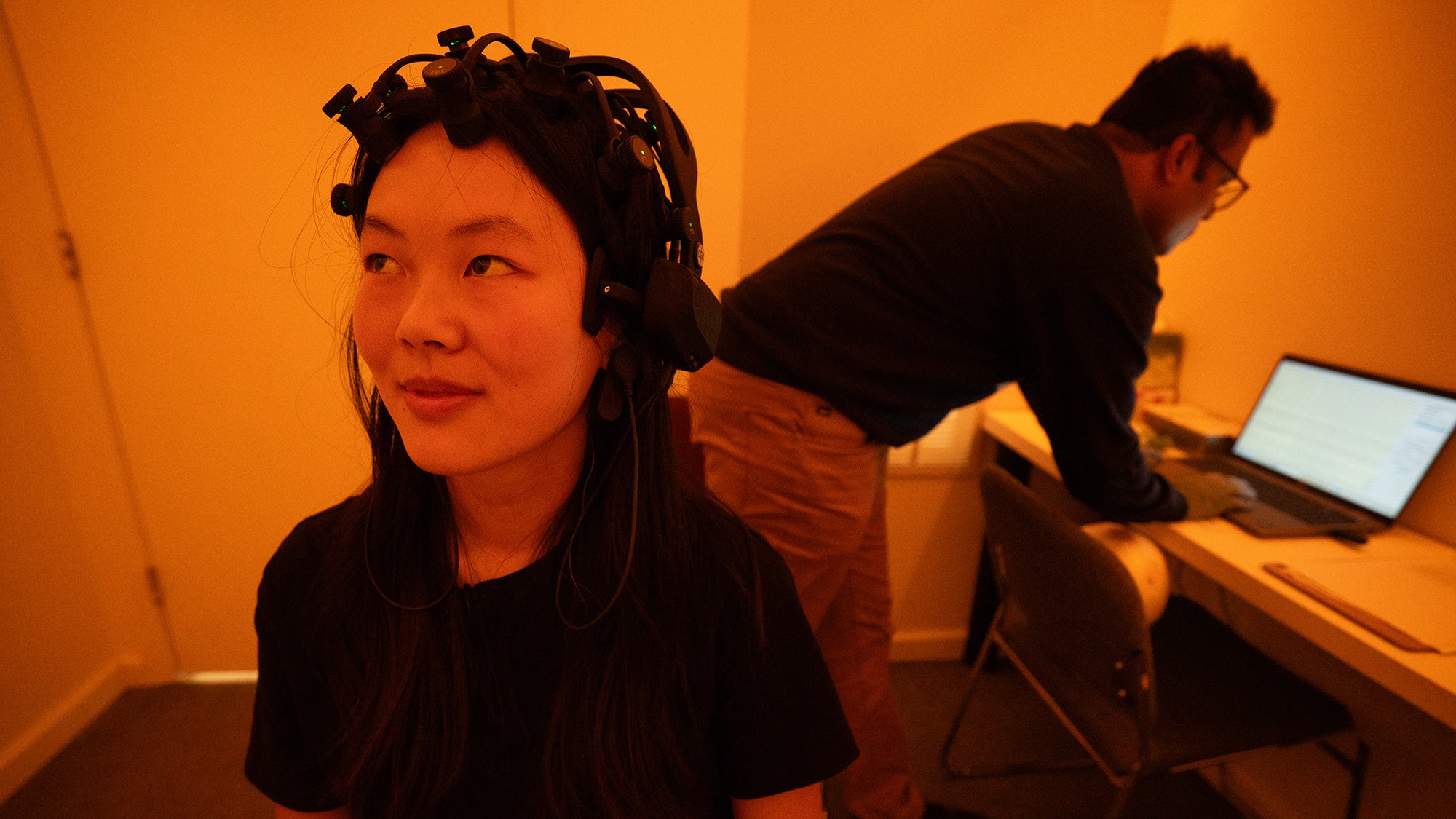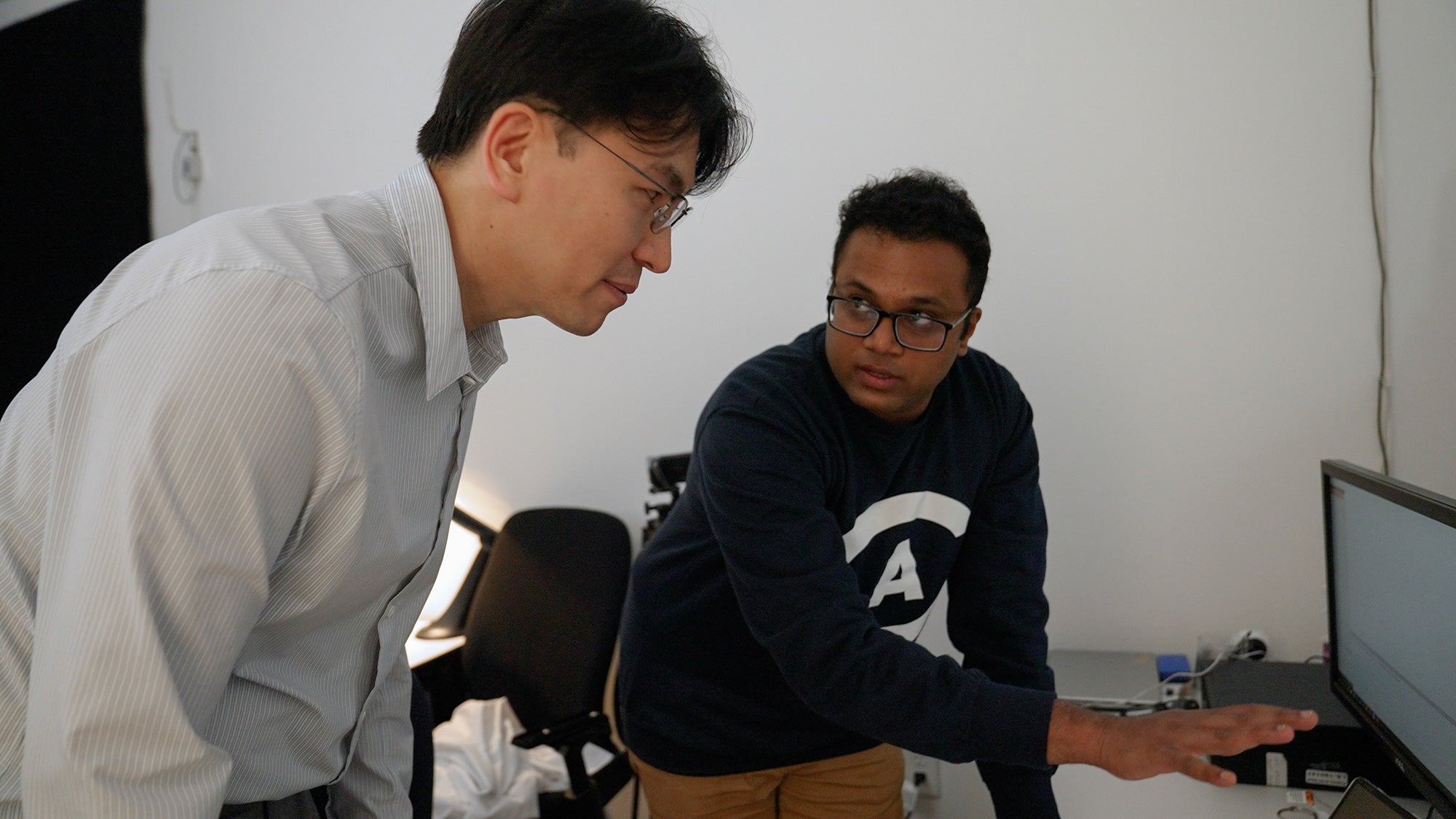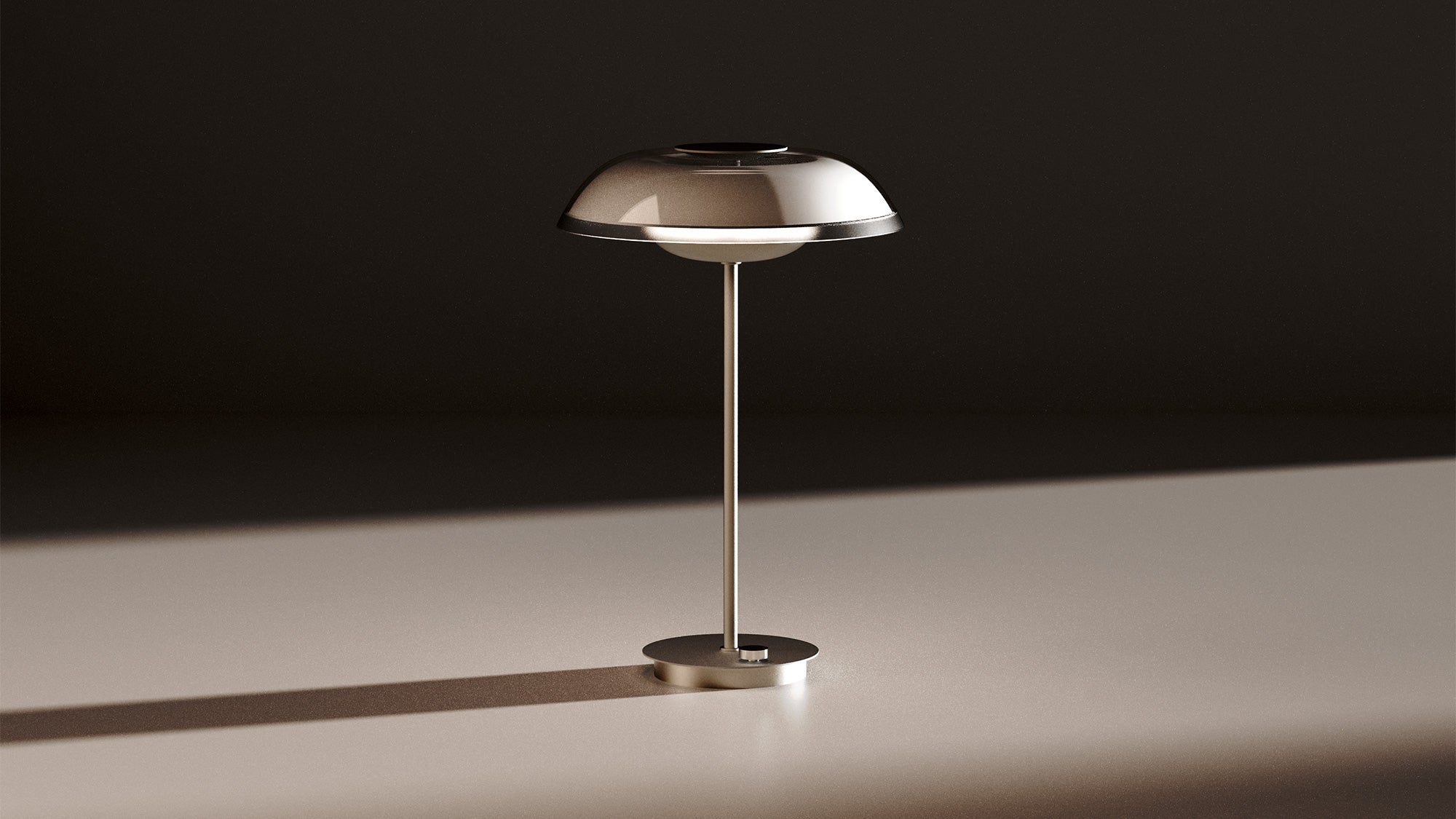Veronica Then wore an electroencephalogram, or EEG, cap and stood in front of a black curtain with a white square placed behind her like a target. Studio lights beamed down from the ceiling as a panel of judges watched. The judges were anonymous, clad in white lab coats and white facemasks.
"I have a lot of different hobbies," Then, a UC Davis undergraduate student, told the judges. "Sometimes, I like to crochet or sew or play video games. I also like to learn a little bit of everything. So, yeah … that's what I've been doing in school."
She was tasked with speaking for five minutes but paused. Silence filled the room.
"You still have more time," one judge said after 10 seconds.
"Still more time?"
Then filled the quiet by explaining philosophical concepts she explored in a bioethics class.

"The goal of this experiment is to introduce stress in a controlled manner," explained Sreenivasan Meyyappan, an assistant project scientist at UC Davis who was running the experiment at The Color Lab.
An interdisciplinary research collaboration between the California Lighting Technology Center, or CLTC, and the Center for Mind and Brain, or CMB, The Color Lab is part of an effort to implement human-centric lighting designs to optimize well-being. With the research supported by industry - including Toyota Boshoku America, Seoul Semiconductor and Color Kinetics - the findings are now informing the design of lighting fixtures in various settings.
Following the five-minute public speaking task, the judges assigned Then a math problem. Starting from 1,022, she had to continuously subtract 13 from the total out loud. If she made a mistake, the judges prompted her to start from the top.
Afterward, Then was brought to a separate room flushed with either white, amber, green, blue or red lighting. The researchers measured her physiological and behavioral responses to the colors, including how exposure impacted her stress hormones.
"We want to look at how you recover from stress under specific lighting conditions," explained Meyyappan, who's affiliated with CMB. "That's why we have different lighting."
While Then completed a mock version of the experiment, the protocol is something The Color Lab has completed with hundreds of individuals to better understand the effects of light and color on human health and behavior.
"The question was very simple," said Jae Yong Suk, faculty co-director of CLTC and an associate professor of design. "Is there an opportunity for us to use lighting as a medium to relieve human stress?"
Discovering the power of color psychology through lighting research
Roughly four years ago, Toyota Boshoku America approached CLTC with a similar question. With an eye toward the future of autonomous vehicles, the automotive interior company, according to Suk, wondered how to design a car's interior lighting to influence human mood and emotion, particularly using discrete colors of light.
With expertise in architectural lighting systems, LEDs and controls technology, Suk and CLTC Director Michael Siminovitch, who is also the associate director of the Energy Efficiency Institute at UC Davis, reached out to Distinguished Professor of Psychology and Neurology George Mangun, the co-director of CMB.
"We are experts on the lighting side of this project, but we needed an understanding of the human side," Suk said.
Mangun, Meyyappan and Associate Professor of Psychology Camelia Hostinar were eager to collaborate.
"Lighting affects so many aspects of our psychology and our biology, and we don't know all the details about how that works," said Mangun. "And even what we do know hasn't really been translated that well into everyday use."
The researchers started developing an experimental protocol that eventually morphed into The Color Lab. The team deliberated over experimental setup, drawing up prototypes and debating individual elements.
"We began to see how our individual expertise, including methodology, could be put together to create an experiment that none of us had ever done before," Mangun said. "We've done a lot of EEG studies on perception and attention and cognition; Camelia has done a lot of stress work; but we've never done any work with lighting, so it's really a unique combination of these different areas coming together."
The team built the experiment around the Trier social stress test, a well-known experiment that reliably reproduces stress in study subjects by asking them to engage in public speaking tasks. The researchers then selected five colors of ambient light to expose study subjects to following the Trier social stress test. The colors were white, amber, red, green and blue.
"This was kind of a shot in the dark here, literally, because we didn't know if these colors would elicit any effect," Siminovitch said. "Ideally, you'd want to do 50 colors, but we couldn't afford to do that, so we selected five."
Unsure of what they'd discover, the team initially ran the experiment with a cohort of 30 study participants. The results were promising.
"When we finished with the 30, we had a statistically significant result with one particular color," Siminovitch said. "Ideally you want to get study participants up into the 100 region, so in the second phase, we rolled out the experiment to 100 subjects to really test those initial findings."



How amber light reduces stress and anxiety
During the experiment, the team monitored the study participants' brainwaves and levels of the "stress hormone" cortisol. Participants also completed behavioral assessments following the experiments.
"We found that amber lighting seemed to be the most relaxing when it came to these physiological measures and people reported it as well," Mangun said.
"Amber lighting has the fastest and the greatest stress mitigation impact among the chosen colors," Suk agreed. "We found that the other discrete colors such as red, green and blue have no added benefit of soothing effects compared to white, which means that they can slow down the stress recovery process."
Hypotheses abound regarding why amber light is soothing to the human mind. One theory proposed by Suk and Siminovitch is that amber light is similar to the natural light experienced in nature. It evokes sunsets and campfires.
"Amber has some sort of evolutionary meaning to us," Mangun said. "It also has a daily meaning to individuals, because at the end of the day, you typically get to go home and relax, and that corresponds to amber lighting in the environment."
Mangun said that the team is designing experiments to probe these evolutionary and biological questions. But what is clear is that humans are bound to light.
On top of regulating stress levels, light influences our circadian rhythms, controlling the production of sleep-wake cycle hormones like melatonin. The artificial lighting of the modern world - specifically the blue light expelled by smartphones, fluorescents and light-emitting diodes, or LEDs - can disrupt this natural rhythm.
"The ultimate goal of this research is to help individuals recover from daily stressors, such as a stressful day or a stressful commute, by providing effective strategies that promote relaxation and well-being," Meyyappan said.

Changing hospital lighting could improve patient health
The Color Lab researchers are committed to translating research into real-world applications. Since conducting the pilot and follow-up experiments in The Color Lab, they have started working with industry partners to implement their findings.
"I think health care is the tip of the spear," Siminovitch said. "Hospitals, dentist offices, elder care housing - places where there can be stress and where we control what the lighting ambiance might be. There are many stress mitigation opportunities primarily associated with wellness."
"A unique aspect of this lighting intervention is that it's a very passive intervention," Meyyappan added. "If you look at other interventions, like yoga or meditation, these are more experiential and involve a lot of effort from the user, but lighting interventions can be passively administered, and it doesn't involve much effort after being set up. Most importantly, this intervention can easily supplement other wellness interventions."
Siminovitch and Suk are discussing with industry partners ways to introduce amber lighting to buildings. They've also partnered with Maltani Corp., a South Korean lighting manufacturer, to incorporate amber lighting into a table lamp, the Davis Lamp. The lamp will be available in the U.S. market in the fall.

Suk said the team is working with UC Davis Health to fully integrate circadian lighting systems into the infrastructure of a 14-story addition to the UC Davis Medical Center for the health and well-being of patients, doctors and nurses.
"We incorporated the amber lighting into the imaging room spaces at the UC Irvine Medical Center," he said. "What we learned is that patients are highly stressed in those specific spaces."
The Color Lab is a showcase example of how interdisciplinary research at UC Davis is illuminating new knowledge and translating that knowledge into real-world applications.
"UC Davis has a very strong reputation for interdisciplinary work," Mangun said. "We do it very well and very earnestly."
"Interdisciplinary research is the future," Suk agreed. "There is limitless opportunity available out there."






